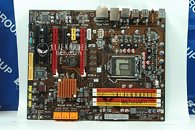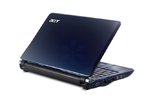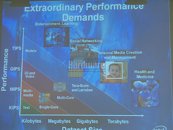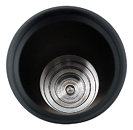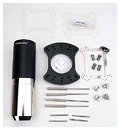
ECS A785GM-M and P55H-A Motherboards Pictured
ECS is dressing up two new motherboards for a gala launch at Computex 2009. The A785GM-M and P55H-A were recently announced by the company to be heading for display and launch at the event, in its Computex booth invitation press-release. AlienBabelTech published exclusive pictures of the two.
To begin with, the A785GM-M is a micro-ATX motherboard based on the new AMD 785G chipset. The chipset features a Radeon HD 4200-class IGP. It is possibly based on the new RS880 core. The board supports AMD AM3 socket CPUs, and provides four DDR3 DIMM slots. Its display connectivity options include D-Sub, DVI, and HDMI. The rest of its connectivity includes FireWire, eSATA and one gigabit Ethernet interface.
The P55H-A on the other hand, is one of the company's first offerings that support the upcoming LGA-1156 socket processors. This is another of the motherboards we have seen so far, that lack display connectors, and hence, lack Intel Flexible Display Interface support, that connects integrated graphics processors on some CPUs to their output. It provides two PCI-Express 2.0 x16 slots (electrically dual x8 when both populated). Four DDR3 DIMM slots support dual-channel DDR3 memory, 8 channel audio, gigabit Ethernet, and 6 SATA II ports make for the rest of it.
To begin with, the A785GM-M is a micro-ATX motherboard based on the new AMD 785G chipset. The chipset features a Radeon HD 4200-class IGP. It is possibly based on the new RS880 core. The board supports AMD AM3 socket CPUs, and provides four DDR3 DIMM slots. Its display connectivity options include D-Sub, DVI, and HDMI. The rest of its connectivity includes FireWire, eSATA and one gigabit Ethernet interface.
The P55H-A on the other hand, is one of the company's first offerings that support the upcoming LGA-1156 socket processors. This is another of the motherboards we have seen so far, that lack display connectors, and hence, lack Intel Flexible Display Interface support, that connects integrated graphics processors on some CPUs to their output. It provides two PCI-Express 2.0 x16 slots (electrically dual x8 when both populated). Four DDR3 DIMM slots support dual-channel DDR3 memory, 8 channel audio, gigabit Ethernet, and 6 SATA II ports make for the rest of it.


